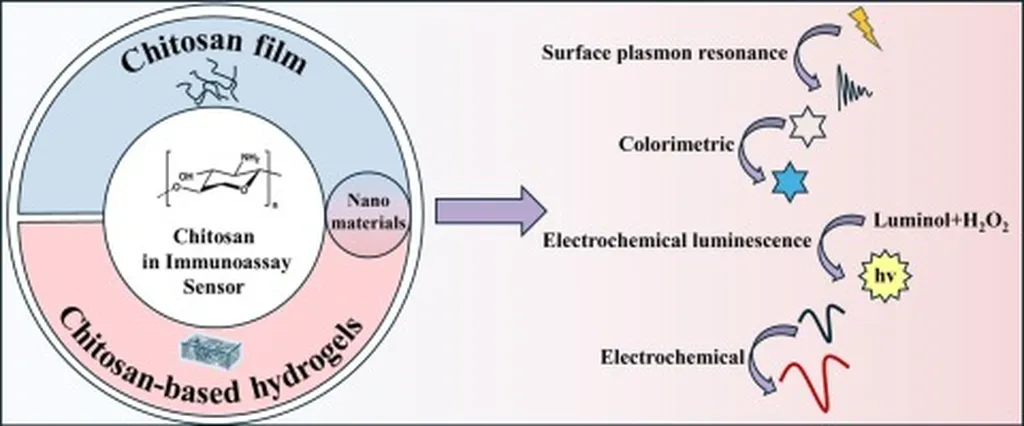In the quest to harness the full potential of chitosan, a versatile biopolymer with applications spanning food, pharmaceuticals, and agriculture, researchers have long grappled with a critical challenge: accurately determining the degree of deacetylation (DD). This parameter is pivotal in defining chitosan’s properties and functionality, directly influencing its solubility, bioactivity, and suitability for various applications. A recent study published in *Materials Research* (or *Pesquisa em Materiais* in Portuguese) sheds light on this very issue, offering a comparative analysis of analytical methods for quantifying DD, with significant implications for both academic research and industrial applications.
Led by Talita Martins, a researcher affiliated with a prominent institution, the study evaluated the DD of commercial chitosan using a variety of widely accessible techniques. These included potentiometric titration (PT), Fourier transform infrared spectroscopy (FTIR), Raman spectroscopy, UV-Vis spectroscopy, and X-ray diffraction (XRD). The findings reveal that while there were differences between the methods, all techniques effectively quantified DD, highlighting factors such as sample solubility, moisture content, baseline correction, and instrument accuracy that contribute to these discrepancies.
“Accurate determination of DD is crucial as it directly affects the behavior of the material in different environments,” Martins explained. “However, high-precision methods are often costly and difficult to access, posing a challenge for both academic research and industrial applications.”
The study’s significance lies in its demonstration of the feasibility and reliability of simple and accessible techniques for DD determination. By providing valuable insights into the factors influencing DD measurement, the research paves the way for improved use of chitosan in various fields. This is particularly relevant for the energy sector, where chitosan’s unique properties can be leveraged for applications such as biopolymer-based energy storage devices, membranes for fuel cells, and as a sustainable material for energy-efficient packaging.
The findings also open up new avenues for future research. As Martins noted, “Understanding the nuances of each method allows us to optimize their use based on specific requirements and resources available.” This could lead to the development of more tailored and cost-effective approaches for DD determination, making chitosan more accessible for a wide range of applications.
In conclusion, this study not only advances our understanding of chitosan characterization but also underscores the importance of accessible and reliable analytical methods. As the world continues to seek sustainable and versatile materials, chitosan stands out as a promising candidate, and this research brings us one step closer to unlocking its full potential. With the insights gained from this study, researchers and industry professionals alike can make more informed decisions, ultimately driving innovation and progress in the field.

